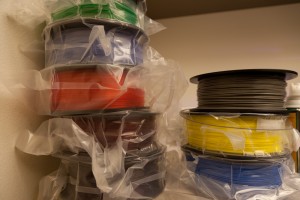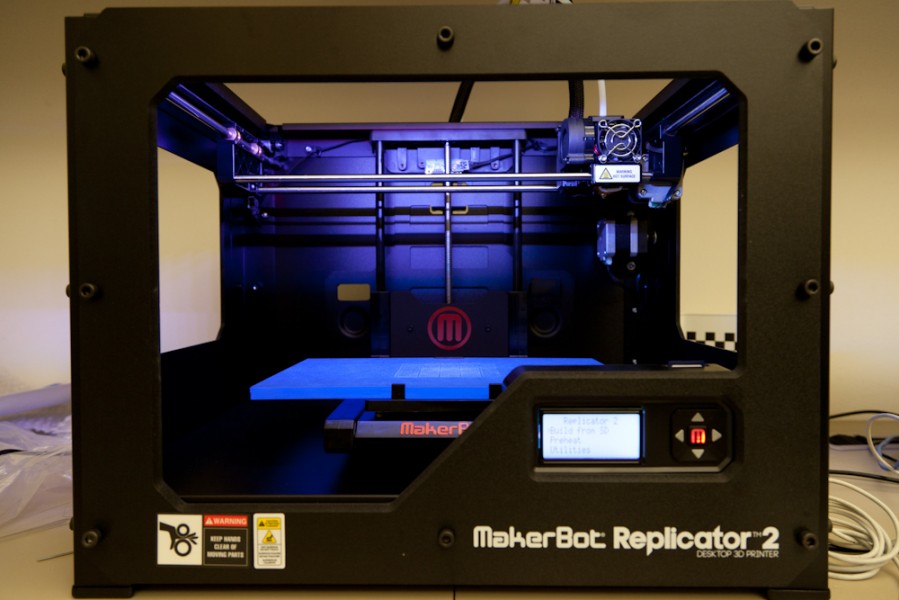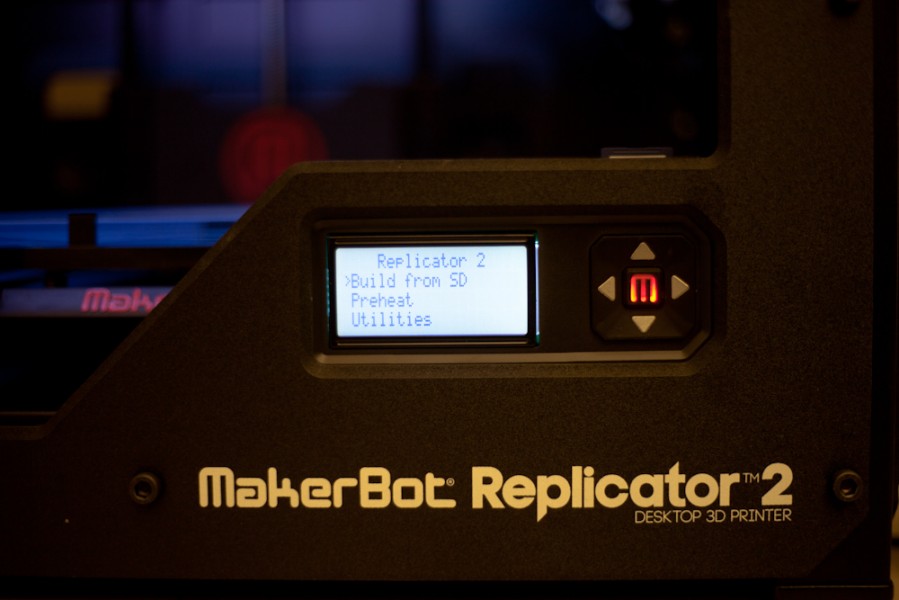Tags
Related Posts
Share This
Progressive Printing

Colorful spools of filament, which the printer uses to construct the objects, are stacked in the corner awaiting use.
The MakerBot Replicator 2 sounds like it could be a strange machine straight out of an old science fiction movie. Actually, it is a piece of equipment revolutionizing the way artists are able to make work. The machine’s sole purpose is 3D printing, for which it uses PLA filament (a plastic thread of sorts) to build models, prototypes, sculptures and physical objects of all kinds.
The art department invested in the printer near the end of the Fall 2013 semester.
“I’ve been coming in on evenings and weekends to figure out how the machine works and how it can be used in relation to 2D, 3D, and digital studio practices,” art department faculty Nick Chiarella says.
Due to the novelty of the machine, this addition to the art department is only being made available to a handful of students in select classes, and will not be in use until after spring break. Linda Swanson, head of the department, and Thomas Lehn, another art department faculty, are both considering uses for the machine in their classes. With the endless innovative options it provides, the machine’s potential will begin to be tested by students in just a few short weeks. In the meantime, SFUAD has bragging rights of being home to an award-winning tool.
In addition to the MakerBot Replicator 2, a 3D scanner that is capable of recreating the physical objects into 3D computer models, essentially reversing the process of the printer, was also purchased. These inclusions to the contemporary tools available to students will surely be seeing frequent use soon in the future. Chiarella’s support in the adaptability and usefulness of the machine is reasonable when he mentions, “The printer can definitely be a tool for artists working in any media.”









 Jackalope Magazine is the student magazine of Santa Fe University of Art and Design. Building on the interdisciplinary nature of our education, we aim to showcase the talent of our university and character of our city.
Jackalope Magazine is the student magazine of Santa Fe University of Art and Design. Building on the interdisciplinary nature of our education, we aim to showcase the talent of our university and character of our city.
Recent Comments